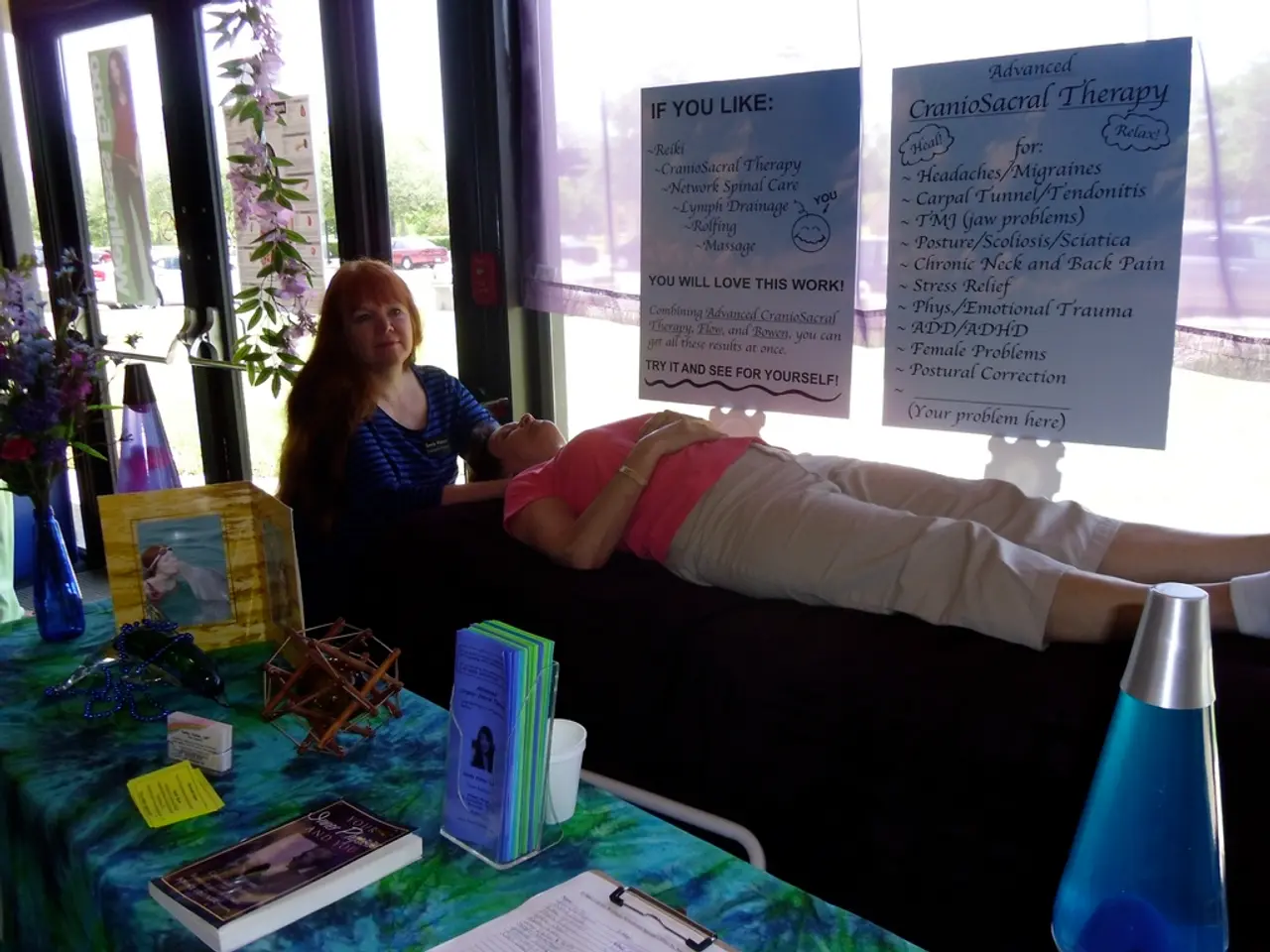Is an Online Mental Health Professional Suitable for Your Needs?
In the realm of mental health care, two approaches have gained significant attention: online psychiatry and in-person psychiatry. Both methods offer unique benefits and potential drawbacks, and understanding these differences can help individuals make informed decisions about their mental health care.
Online psychiatry, also known as telepsychiatry, is a method of connecting virtually with a medical provider who can evaluate, diagnose, and treat mental health issues, including prescribing medications. This approach has grown in popularity due to increased demand for mental health services, a shortage of psychiatrists, and long wait-times for in-person appointments.
One of the key advantages of online psychiatry is its accessibility. It significantly improves access for many people, especially those in rural or underserved areas, by eliminating travel barriers and reducing stigma linked to visiting a psychiatric office. Online psychiatry also offers more flexibility and scheduling convenience, allowing people to attend sessions from home, which can increase comfort and potentially openness during therapy.
Convenience is another significant advantage of online psychiatry. Consultations can be conducted via live video conferencing, phone calls, or messaging, and often include additional communication options between sessions, such as messaging or emailing the therapist, helping with ongoing support and progress tracking. This flexibility is less commonly available in in-person setups.
However, online psychiatry is not without its potential drawbacks. Technical challenges such as connectivity issues and privacy concerns may affect the quality of the therapeutic relationship and engagement. Some therapists report preferring in-person care due to these factors and the subtleties of face-to-face interactions, although patient satisfaction generally remains high in both formats. Moreover, the home environment may not always be conducive to privacy or free from distractions, potentially impacting session effectiveness.
In-person psychiatry, on the other hand, delivers reliable, direct interaction. Depending on your needs and situation, an in-person psychiatrist may be better equipped to handle more complex or severe cases. A psychiatrist can diagnose any underlying medical conditions that could be causing your psychiatric symptoms, and monitor the effects of medication on your blood pressure, heart health, or liver and kidney function, for example. In-person examinations can be especially important for mental health issues such as substance abuse or eating disorders that can have a major impact on your physical health.
Regarding effectiveness, studies suggest that online psychiatry can be effective in accurately diagnosing common psychiatric disorders and can have a largely positive effect on treatment outcomes. Research indicates that online psychiatry and in-person psychiatry show comparable effectiveness in treating mental health conditions such as depression, bipolar disorder, and serious mental illnesses.
In summary, online psychiatry offers effective, accessible, and convenient mental health care, with some trade-offs in technical and environmental control. In-person psychiatry delivers reliable, direct interaction but is less flexible and accessible. It's crucial to consider your unique circumstances, comfort level, and the nature of your mental health issues when deciding which approach is best for you.
When choosing an online psychiatrist, ensure they are licensed in your state, and that they can order any necessary in-person testing, such as blood tests or physical exams, to rule out any underlying medical causes of your symptoms. The American Psychiatric Association considers telepsychiatry the equivalent to in-person care in diagnostic accuracy, treatment effectiveness, quality of care, and patient satisfaction.
[1] American Psychiatric Association. (2020). Telepsychiatry: A Primer for Clinicians. Retrieved from https://www.psychiatry.org/psychiatrists/practice/telepsychiatry/telepsychiatry-a-primer-for-clinicians
[2] National Council for Mental Wellbeing. (2020). Telepsychiatry: A Guide for Consumers. Retrieved from https://www.thenationalcouncil.org/wp-content/uploads/2020/03/Telepsychiatry-A-Guide-for-Consumers.pdf
[3] Substance Abuse and Mental Health Services Administration. (2019). Telehealth: A Guide for Behavioral Health Practitioners. Retrieved from https://store.samhsa.gov/product/Telehealth-A-Guide-for-Behavioral-Health-Practitioners/SMA19-4925
[4] National Alliance on Mental Illness. (2020). Telepsychiatry. Retrieved from https://www.nami.org/About-NAMI/NAMI-Policy-and-Positions/NAMI-Policy-Platform/Telepsychiatry
[5] Harris, A. H., & Kisely, S. (2019). The effectiveness and safety of online interventions for depression: A systematic review and network meta-analysis of randomised controlled trials. BMJ Open, 9(1), e020081. doi:10.1136/bmjopen-2018-020081
Online psychiatry, despite potential technical challenges and environmental constraints, has shown effectiveness in accurately diagnosing common psychiatric disorders and can have a positive impact on treatment outcomes, as suggested by numerous studies. Notably, online psychiatry improves access for individuals in rural or underserved areas, eliminating travel barriers and reducing stigma, while also offering scheduling flexibility and potential comfort during therapy.
On the other hand, in-person psychiatry provides reliable, direct interaction that may be beneficial for complex or severe mental health cases. In-person assessments can help diagnose underlying medical conditions causing psychiatric symptoms and monitor the effects of medication on physical health factors such as blood pressure, heart health, or liver and kidney function. Depending on your unique circumstances, a combination of online and in-person psychiatry could offer the best of both worlds.




